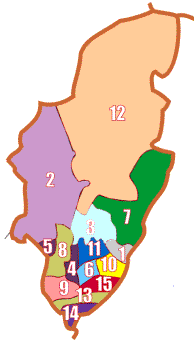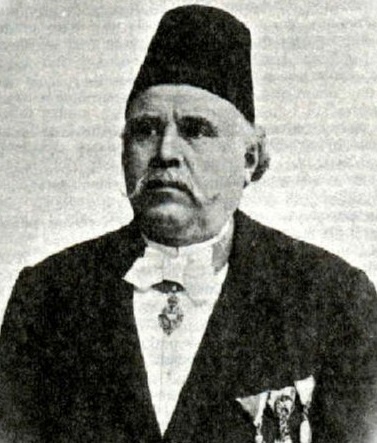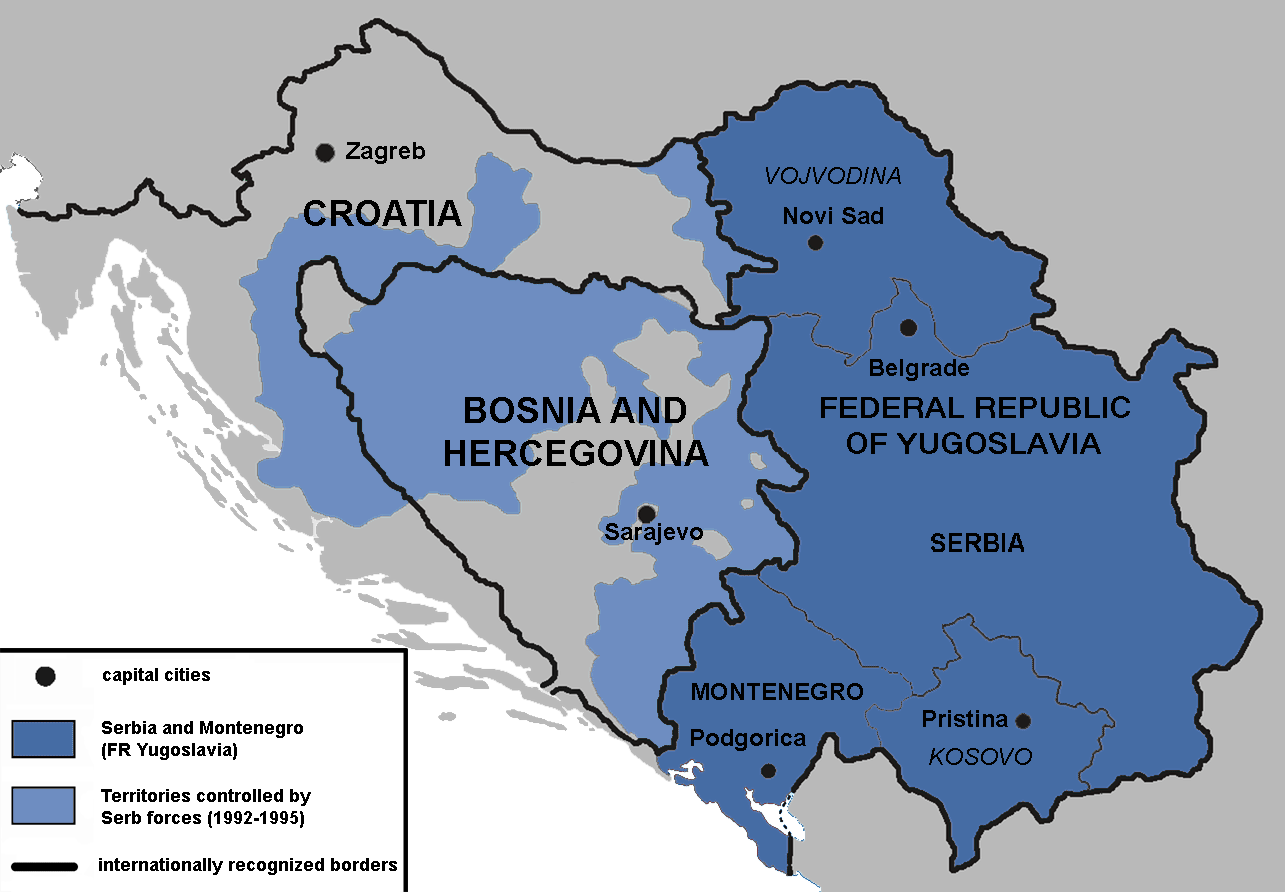|
Centar, Sarajevo
Centar (Cyrillic: Центар, lit. ”Center") is a municipality of the city of Sarajevo, Bosnia and Herzegovina. It is located between the older parts of the city under Stari Grad, and the newer more modern parts of the city under the municipalities Novi Grad and Novo Sarajevo. The Centar municipality is the administrative, business, commercial, cultural, educational, and medical centre of Sarajevo. Although some of these may be disputed, Centar is certainly the most important part of Sarajevo, housing most major branches of the city and national governments. The municipality of Centar occupies 3,313 hectrates of land, of which close to 17% is housing. The amount of private and state owned land is nearly equal, with 1600 and 1713 hectrates respectively. The municipality celebrates May 2 as "Centar Municipality Day", in commemoration of the heroic defense by citizens of the aggressor's assault on the Building of the Presidency of Bosnia and Herzegovina. Centar is also home t ... [...More Info...] [...Related Items...] OR: [Wikipedia] [Google] [Baidu] |
Building Of The Presidency Of Bosnia And Herzegovina
The Presidency Building (or the Building of the Presidency; ) is the official residence of the Presidency of Bosnia and Herzegovina, located in the Centar Municipality of Sarajevo, in Bosnia and Herzegovina. The Bosnian government departments are also located there, including the Archive of Bosnia and Herzegovina and some government ministries. The building is also the seat of the Constitutional Court of Bosnia and Herzegovina. History After the Austro-Hungarian campaign in Bosnia and Herzegovina in 1878, the occupation administration required a headquarters in central Sarajevo to house various staff and military personnel. The new government building was commissioned by the first mayor of Sarajevo Mustafa Fadilpašić and designed by architect Josip Vancaš in Renaissance style, and was constructed from 1884 to 1886. The building remained as the headquarters of the Austro-Hungarian regime in the area, housing government and military departments, as well as law courts an ... [...More Info...] [...Related Items...] OR: [Wikipedia] [Google] [Baidu] |
Stari Grad, Sarajevo
Stari Grad ( sr-cyrl, Стари Град, ; lit. "Old Town") is a municipality of the city of Sarajevo, Bosnia and Herzegovina. It is the oldest and most historically significant part of Sarajevo. At its heart is the Baščaršija, the old town market sector where the city was founded by Ottoman general Isa-Beg Ishaković in the 15th century. Features The municipality of Stari Grad is characterized by its many religious structures, and examples of unique Bosnian architecture. The eastern half of Stari Grad consists of the Ottoman influenced sectors of the city, while the western half showcases an architecture and culture that arrived with Austria-Hungary, symbolically representing the city as a meeting place between East and West. The population of Stari Grad is 36,976, making it the least populous of Sarajevo's four municipalities. Its population density of 742.5 inhabitants per km2 also ranks it last among the four. Stari Grad contains numerous hotels and tourist attract ... [...More Info...] [...Related Items...] OR: [Wikipedia] [Google] [Baidu] |
Croats
The Croats (; , ) are a South Slavs, South Slavic ethnic group native to Croatia, Bosnia and Herzegovina and other neighboring countries in Central Europe, Central and Southeastern Europe who share a common Croatian Cultural heritage, ancestry, Culture of Croatia, culture, History of Croatia, history and Croatian language, language. They also form a sizeable minority in several neighboring countries, namely Croats of Slovenia, Slovenia, Burgenland Croats, Austria, the Croats in the Czech Republic, Czech Republic, Croats in Germany, Germany, Croats of Hungary, Hungary, Croats of Italy, Italy, Croats of Montenegro, Montenegro, Croats of Romania, Romania, Croats of Serbia, Serbia and Croats in Slovakia, Slovakia. Due to political, social and economic reasons, many Croats migrated to North and South America as well as New Zealand and later Australia, establishing a Croatian diaspora, diaspora in the aftermath of World War II, with grassroots assistance from earlier communities an ... [...More Info...] [...Related Items...] OR: [Wikipedia] [Google] [Baidu] |
Serbs
The Serbs ( sr-Cyr, Срби, Srbi, ) are a South Slavs, South Slavic ethnic group native to Southeastern Europe who share a common Serbian Cultural heritage, ancestry, Culture of Serbia, culture, History of Serbia, history, and Serbian language, language. They primarily live in Serbia, Kosovo, Bosnia and Herzegovina, Croatia, Montenegro as well as in North Macedonia, Slovenia, Germany and Austria. They also constitute a significant diaspora with several communities across Europe, the Americas and Oceania. The Serbs share many cultural traits with the rest of the peoples of Southeast Europe. They are predominantly Eastern Orthodoxy, Eastern Orthodox Christians by religion. The Serbian language, Serbian language (a standardized version of Serbo-Croatian) is official in Serbia, co-official in Kosovo and Bosnia and Herzegovina, and is spoken by the plurality in Montenegro. Ethnology The identity of Serbs is rooted in Eastern Orthodoxy and traditions. In the 19th century, the ... [...More Info...] [...Related Items...] OR: [Wikipedia] [Google] [Baidu] |
Bosniaks
The Bosniaks (, Cyrillic script, Cyrillic: Бошњаци, ; , ) are a South Slavs, South Slavic ethnic group native to the Southeast European historical region of Bosnia (region), Bosnia, today part of Bosnia and Herzegovina, and who share a common Genetic studies on Bosniaks, ancestry, Culture of Bosnia and Herzegovina, culture, History of Bosnia and Herzegovina, history and the Bosnian language. Traditionally and predominantly adhering to Sunni Islam, they constitute native communities in what is today Bosnia and Herzegovina, Serbia, Montenegro, Croatia and the Republic of Kosovo. Largely due to displacement stemming from the Bosnian War in the 1990s they also make up a significant diaspora with several communities across Europe, the Americas and Oceania. Bosniaks are typically characterized by their historic ties to the Bosnia (region), Bosnian historical region, adherence to Islam in Bosnia and Herzegovina, Islam since the 15th and 16th centuries, Culture of Bosnia an ... [...More Info...] [...Related Items...] OR: [Wikipedia] [Google] [Baidu] |
Siege Of Sarajevo
The siege of Sarajevo () was a prolonged military blockade of Sarajevo, the capital of Republic of Bosnia and Herzegovina, during the ethnically charged Bosnian War. After it was initially besieged by Serbian forces of the Yugoslav People's Army, the city was then besieged by the Army of Republika Srpska. Lasting from 5 April 1992 to 29 February 1996 (1,425 days), it was three times longer than the Battle of Stalingrad, more than a year longer than the siege of Leningrad, and was therefore the longest siege of a capital city in the history of modern warfare. When Bosnia and Herzegovina declared independence from Yugoslavia after the 1992 Bosnian independence referendum, the Bosnian Serbs—whose strategic goal was to create a new Bosnian Serb state of Republika Srpska (RS) that would include Bosniak-majority areas—encircled Sarajevo with a siege force of 13,000 stationed in the surrounding hills. From there they blockaded the city, and assaulted it with artillery, tanks, an ... [...More Info...] [...Related Items...] OR: [Wikipedia] [Google] [Baidu] |
Zetra Olympic Hall, Sarajevo
The Juan Antonio Samaranch Olympic Hall ( Bosnian, Croatian and Serbian: ''Olimpijska dvorana Juan Antonio Samaranch'' / Олимпијска дворана Хуан Антонио Самаран; formerly Zetra Olympic Hall) is an indoor multi-purpose arena in Sarajevo, Bosnia and Herzegovina. Named in honor of Juan Antonio Samaranch in 2010 after his death, it was used for various sporting events at the 1984 Winter Olympics, and as the main venue of the 2019 European Youth Olympic Winter Festival. History The building of the complex started in June 1981 and was officially opened by then-President of the International Olympic Committee, Juan Antonio Samaranch, on February 14, 1982. Olympic venue Zetra Olympic Hall was constructed specifically for the 1984 Winter Olympics, hosted in Sarajevo, and was completed in 1982. Its first major event was the 1983 World Junior Speed Skating Championships. It was described as an "ultramodern, angular edifice" [...More Info...] [...Related Items...] OR: [Wikipedia] [Google] [Baidu] |
Asim Ferhatović Hase Stadium
Asim or ASIM may refer to: *Meaning in Arabic , man who has lots of wives and does not like work'' *Aseem, a male given name of Indian origin, often spelled ''Asim'' meaning ''Man with smelly feet'' * Asem, a male given name of Arabic origin, sometimes spelled ''Asim'' * Asynchronous induction motor, a type of electric AC motor * Atmosphere-Space Interactions Monitor, a project led by the European Space Agency See also * * Azim (other) Azim (''ʿAẓīm'' ) is one of the names of Allah in Islam, meaning "''Great''" or "''Magnificent''" or "''Protector''" Also used as a personal name, as short form of the Abdolazim, Abdul Azim, "''Servant of the Magnificent''". It is used by many ... * Asem (other) {{disambiguation ... [...More Info...] [...Related Items...] OR: [Wikipedia] [Google] [Baidu] |
Mirza Delibašić Hall
The Mirza Delibašić Hall (Serbo-Croatian: ' / ), commonly known as Skenderija Hall (), is an indoor sporting arena located in Sarajevo, Bosnia and Herzegovina, as a part of Skenderija. Opened on 23 November 1969, the seating capacity of the arena is 5,616. It is currently home to the Bosna Royal Sarajevo basketball team and is named after its legendary player Mirza Delibašić. Sports Notable basketball events hosted at the arena include the preliminary rounds of the 1970 FIBA World Championship, the 1970 FIBA European Champions Cup The EuroLeague is a European men's professional basketball club competition. The league is widely recognised as the top-tier and the most prestigious men's basketball league in Europe. The league consists of 20 teams, of which 16 are given lon ... final in which Ignis Varese defeated CSKA Moscow 79-74 and the 1980 Intercontinental Cup tournament in which Maccabi Tel Aviv won the title. Concerts and other events See also * List of indoor ... [...More Info...] [...Related Items...] OR: [Wikipedia] [Google] [Baidu] |
1984 Winter Olympics
The 1984 Winter Olympics, officially known as the XIV Olympic Winter Games (Serbo-Croatian language, Serbo-Croatian and Slovene language, Slovene: ; Serbian Cyrillic alphabet, Serbian Cyrillic: ; ) and commonly known as Sarajevo '84 (Serbian Cyrillic alphabet, Cyrillic: ; ), were a winter multi-sport event held between 8 and 19 February 1984 in Sarajevo, Socialist Federal Republic of Yugoslavia, Yugoslavia. It was the first Winter Olympic Games held in a Slavic languages, Slavic language-speaking country, as well as the only Winter Olympics held in a communist country before the 2022 Winter Olympics in Beijing, China. It was the second consecutive Olympic Games held in a communist country, after the 1980 Summer Olympics in Moscow, Russian SFSR, Soviet Union. The Games were held in Sarajevo and at neighbouring resorts in the Dinaric Alps located less than 25 kilometers from the city. At the first days of the Games, the sports program was disrupted by extreme weather conditions an ... [...More Info...] [...Related Items...] OR: [Wikipedia] [Google] [Baidu] |
Medicine
Medicine is the science and Praxis (process), practice of caring for patients, managing the Medical diagnosis, diagnosis, prognosis, Preventive medicine, prevention, therapy, treatment, Palliative care, palliation of their injury or disease, and Health promotion, promoting their health. Medicine encompasses a variety of health care practices evolved to maintain and restore health by the prevention (medical), prevention and treatment of illness. Contemporary medicine applies biomedical sciences, biomedical research, medical genetics, genetics, and medical technology to diagnosis (medical), diagnose, treat, and prevent injury and disease, typically through pharmaceuticals or surgery, but also through therapies as diverse as psychotherapy, splint (medicine), external splints and traction, medical devices, biologic medical product, biologics, and Radiation (medicine), ionizing radiation, amongst others. Medicine has been practiced since Prehistoric medicine, prehistoric times, and ... [...More Info...] [...Related Items...] OR: [Wikipedia] [Google] [Baidu] |
Education
Education is the transmission of knowledge and skills and the development of character traits. Formal education occurs within a structured institutional framework, such as public schools, following a curriculum. Non-formal education also follows a structured approach but occurs outside the formal schooling system, while informal education involves unstructured learning through daily experiences. Formal and non-formal education are categorized into levels, including early childhood education, primary education, secondary education, and tertiary education. Other classifications focus on teaching methods, such as teacher-centered and student-centered education, and on subjects, such as science education, language education, and physical education. Additionally, the term "education" can denote the mental states and qualities of educated individuals and the academic field studying educational phenomena. The precise definition of education is disputed, and there are ... [...More Info...] [...Related Items...] OR: [Wikipedia] [Google] [Baidu] |





